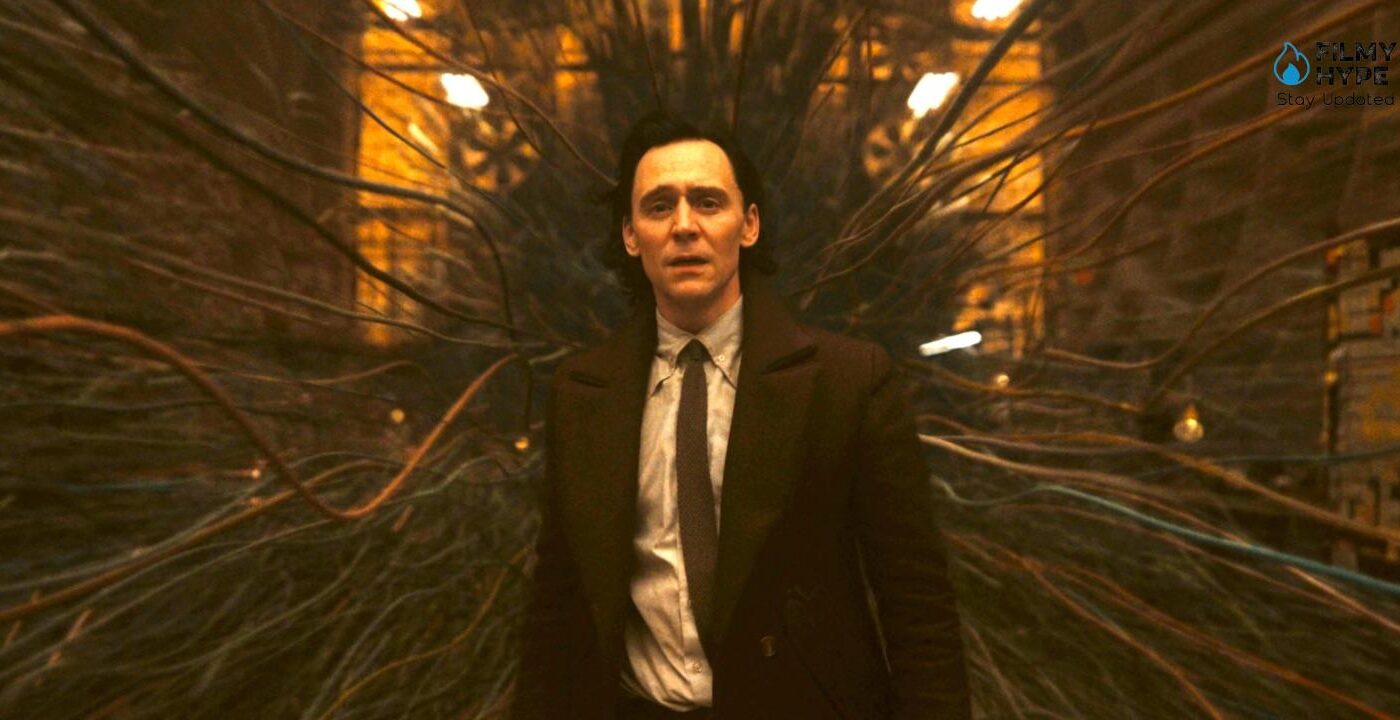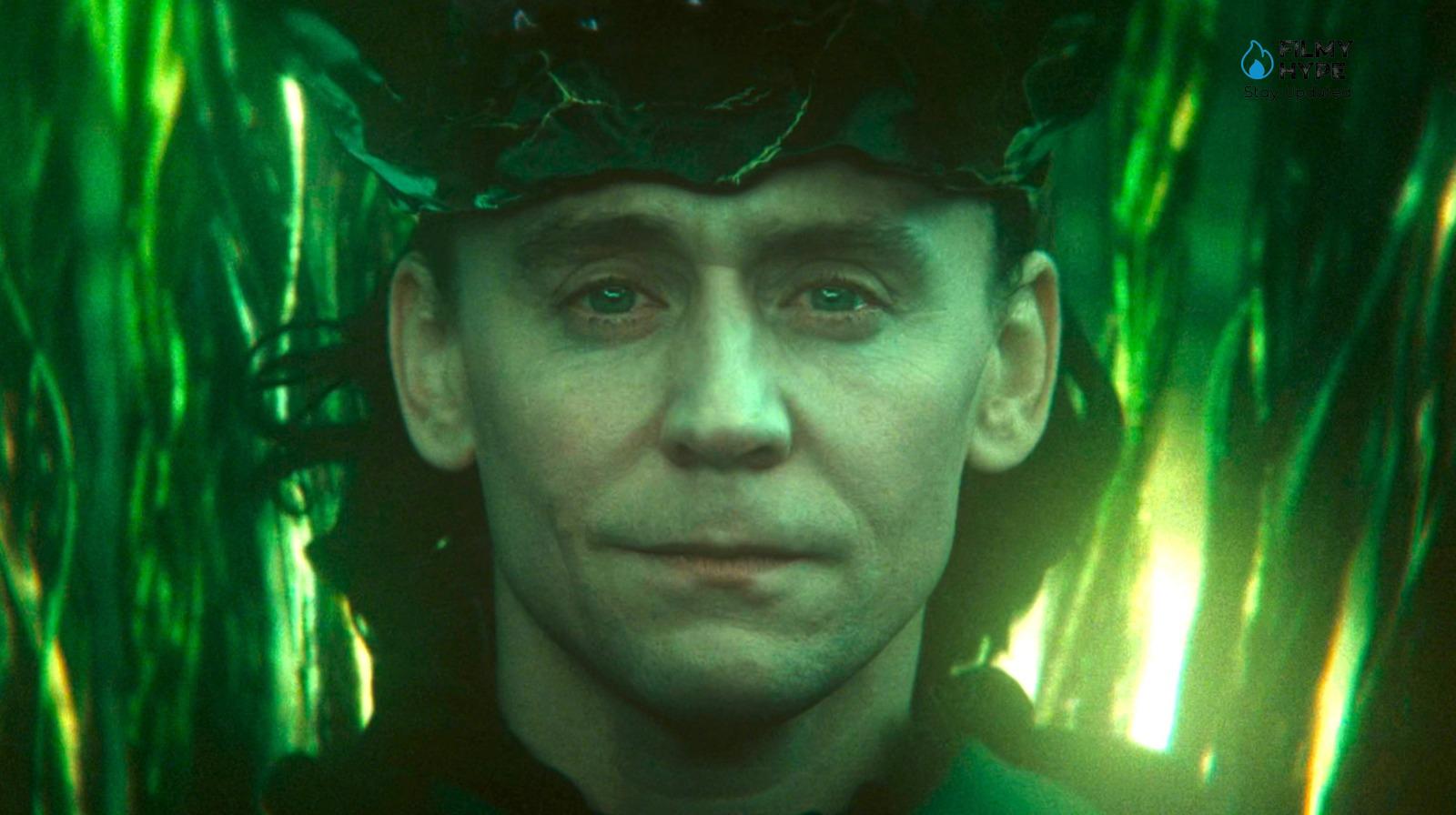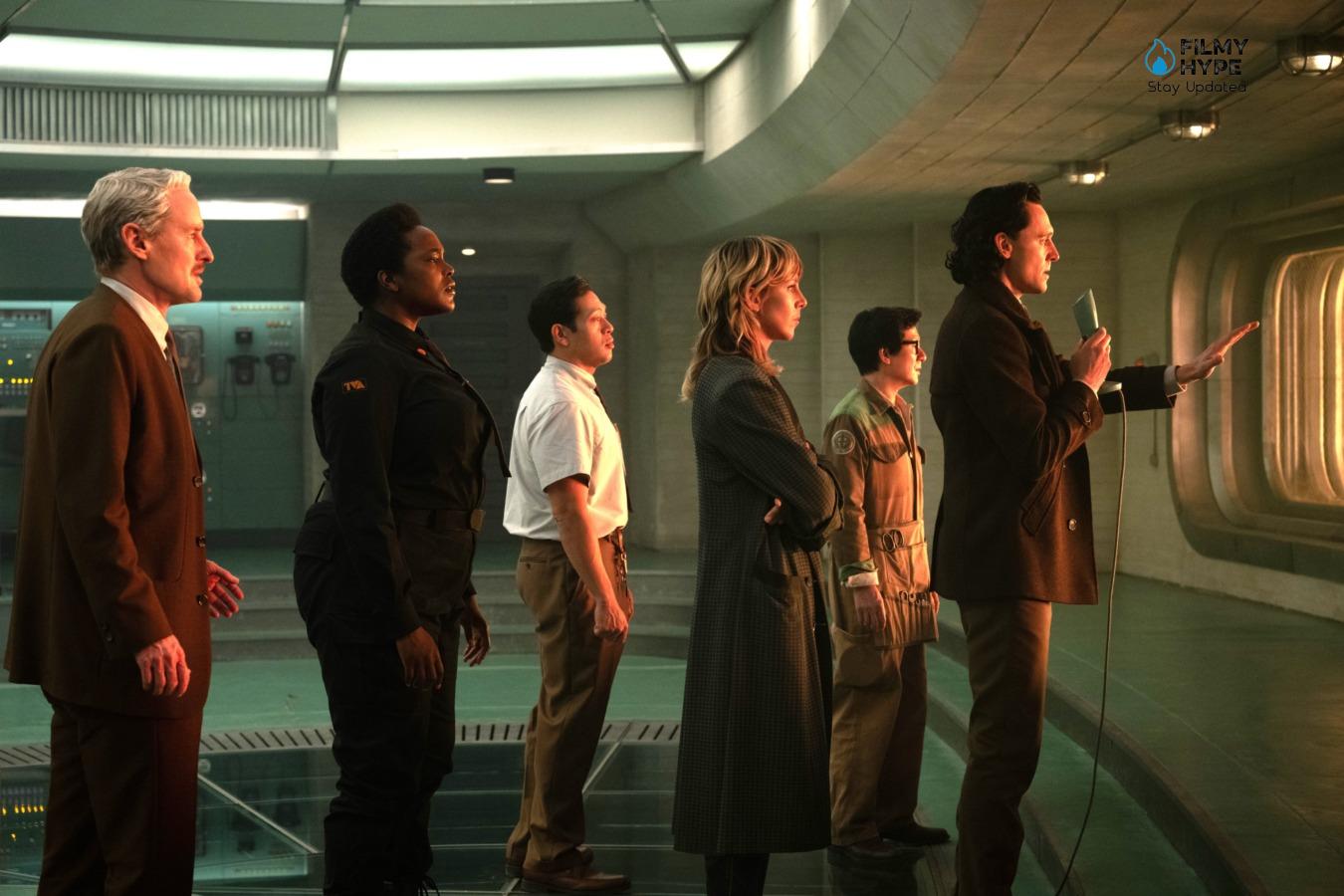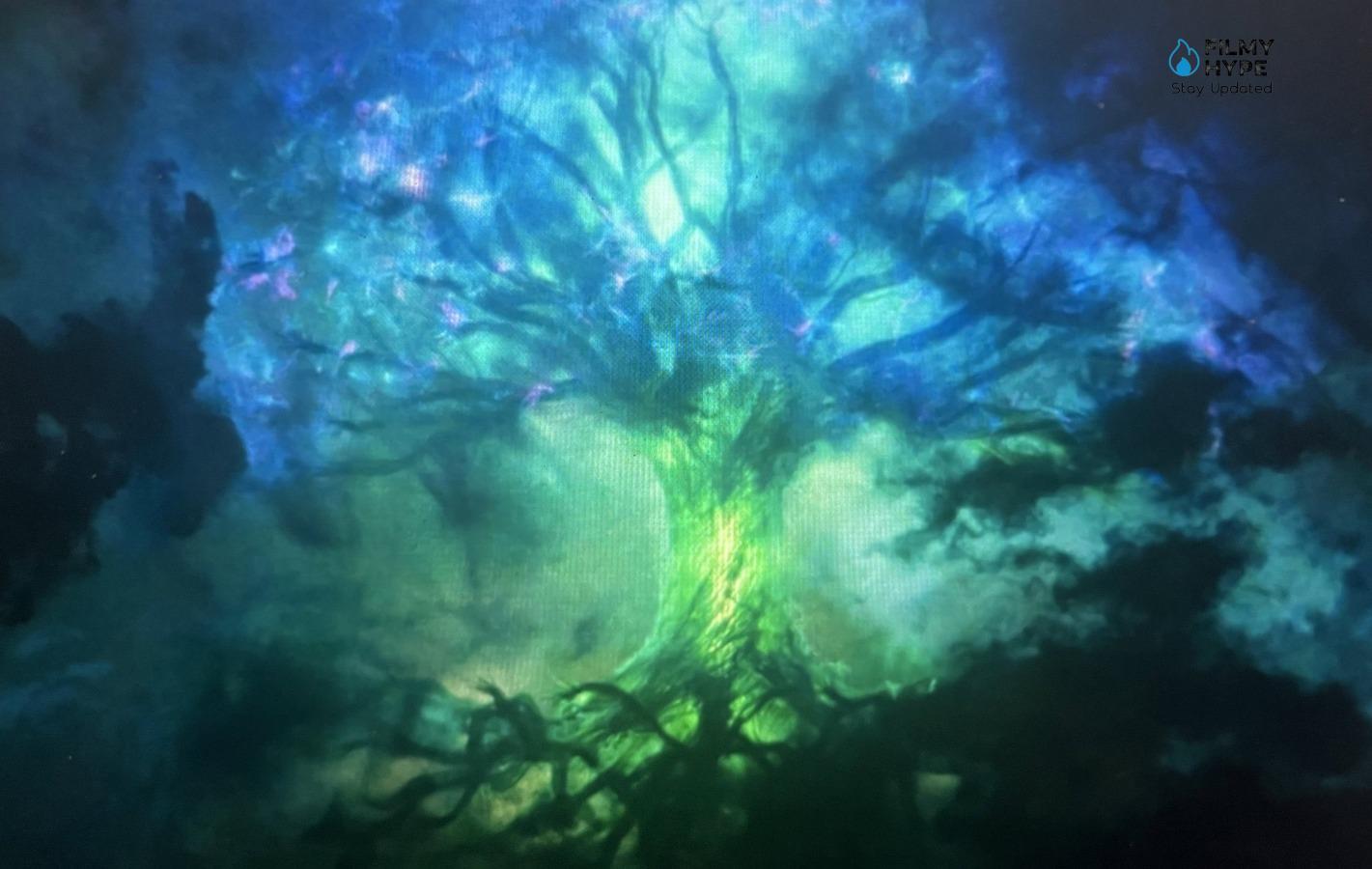Loki Season 2 Ending Explained: Questions and Reflections on the Season Finale
Loki Season 2 ended with an important finale that will lead to several temporal ramifications and new resolutions for the character played by Tom Hiddleston. Specifically, Loki has become a new god, integral to the stability of the entire Marvel multiverse. Furthermore, it seems that Loki has finally discovered what his ultimate “glorious purpose” is. As seen in the series, Loki and the TVA were grappling with the aftermath of the death of the One Who Remains and the resulting influx of new branching timelines he had created. This put a strain on the TVA’s Time Frame, which was tasked with weaving together the various ramifications of the Sacred Timeline. Having gained control over his new affliction known as time-slipping, Loki‘s season 2 finale features a dramatic shift in the character’s status quo.
Loki Season 2 Episode 6 Recap
Loki Season 2 unfolded by slipping through time, charged with one glorious purpose: to prevent the Time Loom from melting and destroying the TVA, which is the only thing that can protect the Sacred Timeline against Kang the Conqueror. As Ouroboros (Ke Huy Quan) explains, the Time Loom refines raw time into a physical timeline. Because it is not built to intertwine the infinitely growing branches that General Dox (Kate Dickie) ordered cut, it is overloaded. That means turning timelines into “spaghetti.” After spending centuries mastering physics, mechanics, and engineering, Loki creates a device to help 19th-century inventor Victor Timely (Majors), a variant of Kang and He Who Remains, complete the performance multiplier to stabilize the Loom. Temporal and reweave the branches of time doubling at an infinite rate, thus creating an ever-expanding multiverse. No matter how many times Loki resets time, the branching timelines are doomed to end in disaster: the Time Loom melts and spaghettins all of reality each time.

The series masters its time slip to go back even further in time, at the end of the first season to prevent Sylvie (Sophia Di Martino) from killing He Who Remains in the Citadel at the end of time, thus setting everyone free. agency, but at the cost of causing timelines to branch into the multiverse and inevitably lead to another multiversal war. The Temporal Loom is the safety mechanism of the One Who Remains: when it is overloaded with branches, it removes those that are not supposed to be there. Everything except the Sacred Timeline. Worse yet, there are an infinite number of Kang variants throughout the multiverse, and only the One Who Remains can protect everyone from a multiversal war where nothing, not even the Sacred Timeline, survives. After proposing to Loki to take his throne and succeed him in his domain throughout time, He Who Remains gives him a choice: break the Temporal Loom and cause a war that ends everything, or kill Sylvie and save something.
Loki Season 2 Ending Explained
“Glorious Purposes” ends with Loki effectively replacing the Time Frame, holding all the timelines together with his power and generating what appears to be Yggdrasil, the World Tree of Norse mythology, condemning himself to solitude to protect everyone, forever, and becoming the God of Stories. The TVA organizes itself, with B-15 the new leader, and now hunts down the variants of He Who Remains (with a quote from Kang The Conqueror from Ant-Man and the Wasp: Quantumania), OB rewrites the TVA leadership, preventing Victor Timely from receiving it as a child and is condemned to become the One Who Remains. Ravonna awakens in the Void and finds herself hit by a purple light, while Mobius leaves TVA to witness the life of his Earth variant on the Sacred Timeline. And Sylvie? She goes her way.
During the episode we also discover that the One Who Remains is still alive at the end of time, that it was all his machination, and that the Time Frame is a security system for the Sacred Timeline: it mows down the excess timelines, and also the TVA. The only way to prevent the meltdown is to prevent Sylvie from stabbing What remains of her: that is, killing her. Loki refuses and finds the “third way”, sacrificing himself for everyone and forever. And obtaining the much-desired throne. “I know what I want. I know what kind of God I must be. For you, for all of us,” Loki says before entering the Frame. “He’s giving us a chance,” Sylvie says shortly after.

In the finale of the second season, Loki realizes that he cannot repair the Time Frame and is faced with a choice: kill Sylvie in the past and prevent the death of the One Who Remains (I remain at his side) or allow the collapse of the entire TVA and the destruction of every single branch to protect the Sacred Timeline. As we discovered this season, the death of the One Who Remains created infinite ramifications that jeopardized the Sacred Timeline, overloading the timeframe with catastrophic consequences. The real twist, however, occurs when Loki discovers – speaking directly with the One Who Remains – that there is no way to save the time frame and that the latter, in short, is only an emergency plan to protect the Sacred Timeline perpetually destroying every ramification (and thus killing trillions of people).
Fully able to control his time travels, Loki manages to move within the timeline of the two seasons to try to understand what choice to make: after a confrontation with Mobius and Sylvie regarding the free will that every ramification should have, our protagonist understands that there is another way to prevent the destruction of the TVA and not kill Sylvie (a choice that would have made the One Who Remains return to the head of the entire organization, essentially removing free will from everyone). Essentially, Loki embraces his true self and decides to become the God he was meant to be by relying completely on free will, without surrendering to these predetermined choices imposed by the One Who Remains. At the same time, however, he is forced to make an arduous sacrifice to accommodate his ” glorious intentions “: to abandon his friends forever and live a life in solitude.
After moving away from the rest of the group, Loki walks towards the time frame without any kind of protection… and surprisingly he is not “spaghettized”, but rather survives and little by little his clothes are replaced by a ” classic ” look, with a green tunic and long horns as headdress. The protagonist uses his magical abilities to shatter the time frame while avoiding its overload: following this action, the Sacred Timeline is free and all the ramifications expand without brakes, but the “threads” quickly become dark. They are dying. Here Loki understands that by using his powers on each of these branched timelines, he can bring them back to life: he therefore decides to slowly grasp each single branch, as he approaches a rift that takes him towards the Citadel at the End of Time, the one that it was once occupied by Him Who Remains (but which is slowly being swept away).

After taking his seat on the throne, Loki essentially recreates the entire Sacred Timeline with his magic, reinvigorating the branching timelines (now free to grow without being mowed down) and entirely replacing the One Who Remains as the new “master of time”. As the camera moves away, we discover that Loki has transformed what was the Sacred Time Line and all its ramifications into a real tree, which takes the shape of Yggdrasil (which in Norse mythology represents the world tree that supports the nine worlds). On the one hand, our protagonist saved the TVA and on the other he foiled the plan of He Who Remains, even avoiding the constant massacre of the ramifications. Furthermore, his plan was never to rule time, but to give free will to each timeline, allowing them to thrive without the fear of being mowed down by the TVA or being spaghettiized by the Time Frame. The consequences of this choice? Loki may have started the Multiverse War, as he is reminded by, He Who Remains.
In this regard, the new role of the TVA is also introduced: monitoring the world tree in search of possible attacks by Kang, such as the one from Ant-Man and The Wasp: Quantumania which is mentioned! Curiously, the timeline is also shown in the same way in Spider-Man: Across the Spider-Verse! In this regard, co-creator Chris Miller (who was evidently in contact with the Loki team) explained in the audio commentary: Curiously, the timeline is also shown in the same way in Spider-Man: Acro The Spider-Verse, there are still many questions relating to what we saw in the episode: for example, did Loki only reshape the Sacred Timeline, or did the “dragging away” of each ramification upset the entire Multiverse, also involving the other parallel dimensions like Earth-838? One thing seems to be certain: Loki is currently at the center of the entire Timeline and has found his “Glorious Purposes”, granting all timelines free will… but is this the case, or was it all planned? Did the Remainer already foresee all this, or has Loki truly become what he was destined to be? Only time will tell.
What Is Yggdrasil, The World Tree, And How Different Is It In Loki Season 2?
Norse mythology speaks of the nine kingdoms united by Yggdrasil. These include Asgard, Midgard, Jotunheim, Svartalfheim, Vanaheim, Nidavellir, Nilfheim, Muspelheim and Alfheim. In Thor: The Dark World he confirms that the nine realms are essentially stacked on top of each other in space-time, like the branches of a tree rising or falling. But Loki Season 2 goes a step further and has recontextualized Yggdrasil in the Marvel Cinematic Universe in a pretty major way. The end of Loki has been responsible for fixing the Sacred Timeline, leaving it in the hands of the God of Mischief himself and how it becomes, effectively, the world tree with him as the center of it.

It is after this revelation that we see Mobius (Owen Wilson) in a new Time Variation Agency with Loki as He Who Remains and attempting to wipe out any threat from Kang on any world. It is here where we discover that Earth 616 was born from this same tree and where they have recently neutralized a threat from Kang. This is where Ant-Man and the Wasp: Quantumania is referenced. As things are with Jonathan Majors, Marvel has been able to solve this problem with the end of season 2 of Loki, where Kang does not take charge of the TVA and where it is in charge of neutralizing him in any other universe, thus stopping any war. of the multiverse.
Loki Saved the Multiverse?
After spending centuries learning everything, he could and continually trying to use OB and Victor Timely’s Range Multiplier to stabilize the Time Frame, Loki discovers that the problem has a greater scope. He thus chooses to break the loop and “change the equation”, intentionally destroying the Time Frame and using its powers to save all branching timelines, becoming a new guardian god of the Time Frame for the entire multiverse.
Loki‘s Sacrifice: An Epochal Transformation?
The centerpiece of the episode was the epic sacrifice of Loki, who transformed from a cunning prince to a figure crucial to the stability of the multiverse. His decision to take the place of the One Who Remains opens up a series of questions: how will Loki‘s character evolve and what role will he have in future phases of the MCU? Will we see him in one of the next Marvel Avengers films, perhaps fighting against an even more evil variant of Kang?
Sylvie’s Paradox: Free Will vs. Predetermined Destiny?
Sylvie, with her tireless fight for free will, brought significant depth to the plot. However, her choice to kill the Kang Remainer variant and Loki‘s subsequent reaction raises questions about the complex dynamics of love and sacrifice. Ultimately, can Sylvie be seen as the “bad” part of Loki? Being a variant of her, Sylvie could be an ungrown and mature Loki. She has great resentment towards those who deprived her of a normal life, but she has never managed to move on. We seem to see the Loki of 2011, who was full of resentment towards his father Odin, and his “lucky” brother Thor. Loki had in turn been deprived of life with his kin, the Giants of Jotunheim.
The Implications in the MCU and the Fate of TVA?
While Loki has his narrative independent of the entire MCU, the implications of the ending for the entire MCU are immense. What connections and crossovers can we expect in the future? How will it influence the plot of upcoming Marvel productions? The biggest question mark is that we don’t yet know how Loki will rule and whether other variants of him (and/or Kang’s) will be a threat in the future. Moreover, in the season 1 finale, He Who Remains explicitly said that other variants of him will move to control time.
Loki Season 2 Episode 6 Easter Eggs
Throughout the two seasons of Loki, the most frequent Easter eggs are found in the Marvel Studios introductory logo. This trick continued with the sixth episode of Loki‘s second season, playing with Loki‘s time shifts. The Marvel Studios logo started normally, only in reverse, working backward through the now-iconic animation that accompanies every MCU property. This was done as an easter egg for Loki‘s time shifts as he moved backward in time after the end of Fantasy/Science. An interesting easter egg of Glorious Purpose is an aspect in common with most stories based on time loops. Loki found himself back in time during the events of The Heart of the TVA, before the collapse of the Loom due to his time-shifting power. In a montage of humorous scenes accompanied by the music of Walter Murphy’s A Fifth of Beethoven, the events of The Heart of the TVA were depicted in different ways from many different perspectives, as Loki sought to undo the destruction of the TVA.
After Loki realized that he could not save the Time Frame by influencing events, the newly crowned God of Stories went even further back in time. From the heist attempts of Miss Minutes and Ravonna Renslayer to the introduction of OB and Victor Timely, several moments from Loki‘s second-season story have been revisited. These Easter eggs worked because they were part of Loki‘s time shifts, reflecting the overall journey of the show’s titular character. Loki‘s further failed attempts to save the TVA forced him to take drastic measures. In a series of Loki season 1 nods, the season 2 finale brought Loki back to the Citadel at the End of Time. Whether it’s the Loki, Sylvie, and He Who Remains scene in the elevator or Sylvie’s attempts to kill He Who Remains Glorious Purposes has included a rich repertoire of references to the season one finale.
While He Who Remains’ “See you soon” was a disturbing prelude to Kang’s future in the MCU during Loki‘s season 1 finale, Glorious Purposes made this Easter egg even deeper. Loki relentlessly tries to prevent Sylvie from killing the One Who Remains in vain, meaning that the phrase “See you soon” can be heard multiple times. The number of times He Who Remains uttered this phrase in the sixth episode of Loki Season 2 now has a deeper meaning, as it suggests the emergence of multiple variations of Kang, paralleling the many times He Who Remains had hinted at the rise of his peers. Glorious Purposes reveals that He Who Remains is the person who caused Loki‘s time shifts. He did this to make Loki realize that no matter how hard he tried, he could not save the multiversal universe as the Time Frame will always collapse as a safeguard to protect the Sacred Timeline. The One Who Remains hoped that this would push Loki to kill Sylvie and choose to lead the TVA alongside him.
Surprisingly, He Who Remains states that regardless of his choice, Loki will lose. Either the Time Frame collapses endlessly and destroys the multiverse, or Sylvie must die, connecting to the supposed destination that all Loki’s ultimately lose. The revelation made by He Who Remains that Loki will lose regardless of the latter’s choices pushes him to visit Mobius as seen in the opening episode of the first season. Loki ends up in the temporal theater where he is shown Thanos’ murder of Earth-616’s Loki at the beginning of the series. This scene contains several Easter eggs from the first episode of the show, from the time the theater set is reused to Loki‘s TVA prisoner clothes, the time collar, and Mobius’ personality reflecting the beginning of the show. Cleverly, this is all set up by the fact that both episodes are titled Glorious Purposes.
As Loki prepares to sacrifice his future to destroy the Time Frame and offer everyone else a chance at a better future than the tyranny of the Sacred Timeline, he repeats a phrase he said at the end of Thor (2011). In that film, Loki tries to destroy Jotunheim but is defeated when Thor breaks the Bifrost Bridge: Loki‘s response is to scream “I could have done it, father! For you! For all of us!” When he first said this, Loki was trying to appeal to his father and prove himself, all while fueling his selfish goals. But in Loki‘s ending, he uses the same phrase to show how much he has progressed: now he is willing to make a real sacrifice for others.
After Loki decides to personally police the multiverse, replacing the One Who Remains as the protector of all timelines instead of just the Sacred Timeline, he gets a new costume in the MCU. The costume is an easter egg for Loki‘s entire journey in the MCU, from the enormous horns on his helmet that emulate his past to his cape made up of branches of the multiverse that represent his present. Additionally, Loki‘s helmet is made from the same black and orange marble texture that the Citadel of He Who Remains was created from, referencing his future as the replacement for TVA’s previous leader. After Fantasy/Science saw Loki‘s title change from God of Mischief to God of Stories, Glorious Purposes made this change very literal. Loki‘s bringing together the multiversal branches and his effort to hold them together to keep them under control makes him the literal God of Stories. Loki acts as the god of the multiverse, physically holding all stories together. This Easter egg is an interesting twist on Loki‘s new title, becoming a physical manifestation rather than the theorized ability to change stories.
One of Glorious Purpose’s most obvious Easter eggs comes from his role as the literal God of Stories. Loki is now holding together the branches of the multiverse, which manifest as Yggdrasil, the World Tree. In real-world Norse mythology – and Asgardian folklore within the MCU – Yggdrasil is a gigantic tree that binds the Nine Realms together through its branches. Glorious Purposes provides an important easter egg to this concept by having the multiverse manifest as a Yggdrasil as Loki holds the branches together. After Loki assumes his new role as God of the multiverse, the TVA begins its new task as a security force protecting the multiverse. Shortly before the conclusion of Loki Season 2 Episode 6, B-15 asks Mobius if variants of Kang have appeared throughout the multiverse. Mobius states that one appeared and “wreaked havoc in an adjacent kingdom in 616, but they fixed it.” This is a reference to the events of Ant-Man and the Wasp: Quantumania and Kang’s variant in the Earth-616-adjacent Quantum Realm (MCU) that Scott and Hope dealt with.
After TVA’s new purpose is established, a final plan of Loki alone at the End of Time, holding the multiverse together, is shown. Not only does this solidify Loki‘s extremely important role in the MCU’s multiverse infrastructure, but it’s also an incredibly dark Easter egg to Loki‘s greatest fear: being alone. Loki is now completely alone, without his friends at the End of Time, a sacrifice he made to prevent the branches of the multiverse from being destroyed. In a scene where Ravonna Renslayer also makes an appearance, we get a glimpse of an Egyptian pyramid. This could be a reference to Rama-Tut, Nathaniel Richards’ first appearance in the Marvel Comics Universe, where the future Kang the Conqueror put the Fantastic Four to the test.
Will There Be Loki Season 3?
The first season ended with a post-credits scene confirming that “Loki will return in season 2.” But the season 2 finale of Loki doesn’t have an end credits scene, so the question is: will there be a Loki season 3? “We’re certainly thinking about how we can continue to tell core TVA and Loki stories,” series co-executive producer Kevin Wright told ComicBook. “What I would say is that the first and second seasons were always conceived as two chapters of the same book. We want to close this book. However, I think there are many more books on the shelves.” The Loki Season 2 finale suggests that the God of Mischief is destined to return in Avengers: Secret Wars, as he is literally at the center of the multiverse. While a third season of Loki has yet to be announced, Marvel Studios will conclude The Multiverse Saga with the two-part Avengers: The Kang Dynasty (scheduled for May 1, 2026) and Avengers: Secret Wars (May 7, 2027).

